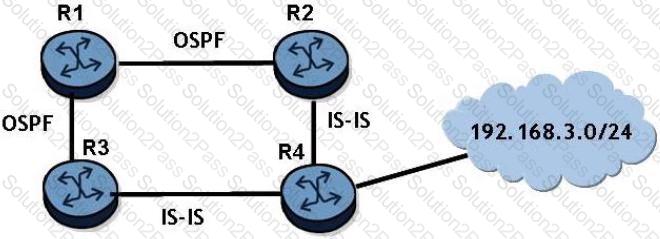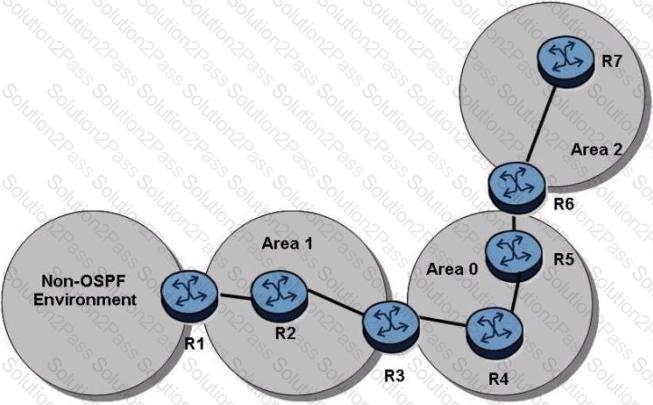4A0-101 Nokia Alcatel-Lucent Interior Routing Protocols and High Availability Free Practice Exam Questions (2025 Updated)
Prepare effectively for your Nokia 4A0-101 Alcatel-Lucent Interior Routing Protocols and High Availability certification with our extensive collection of free, high-quality practice questions. Each question is designed to mirror the actual exam format and objectives, complete with comprehensive answers and detailed explanations. Our materials are regularly updated for 2025, ensuring you have the most current resources to build confidence and succeed on your first attempt.
An OSPF backbone area contains Type 5 LSAs. If an attached area receives only Summary LSAs from the backbone area, what type of area is the attached area?
Which of the following is a characteristic of OSPFv2 that was NOT preserved in OSPFv3?
Which of the following regarding IS-IS DIS is FALSE?
Click on the exhibit.

Given the output shown, which router is the ASBR in this network?
Click on the exhibit.

If router R2 re-distributes the IS-IS route 192.168.3.0/24 into OSPF, router R3 will receive two routes to 192.168.3.0/24 Assume that all IS-IS routers are L1/L2 capable and are in the same area.
What will be the preference of the two routes?
Which of the following best describes the forwarding of a IPv6 packet that has a destination anycast address?
Which of the following best describes an OSPF Type 3 LSA?
How does an IS-IS router acknowledge the receipt of an IS-IS LSP on a point-to-point link?
An Alcatel-Lucent 7750 SR has a port with the MAC address of 00;03:FA:AC:77: AF. The port is bound to an interface. If IPv6 is then enabled on that interface .what will the link-local address be?
Which of the following is NOT a field in the IPv6 header?
Which type of LSA packets describe external routes originated within an NSSA area, and to what type are they converted to at the ABR?
Click on the exhibit.

In the topology shown, router R1 is an ASBR configured to export external routes to OSPF. Assuming that there are no stub networks, which of the following statements regarding Type 5 LSA generation is TRUE?
Which type of OSPF LSA lists the routers attached to a broadcast network?
Which of the following are major features of OSPF? (Choose 2.)
